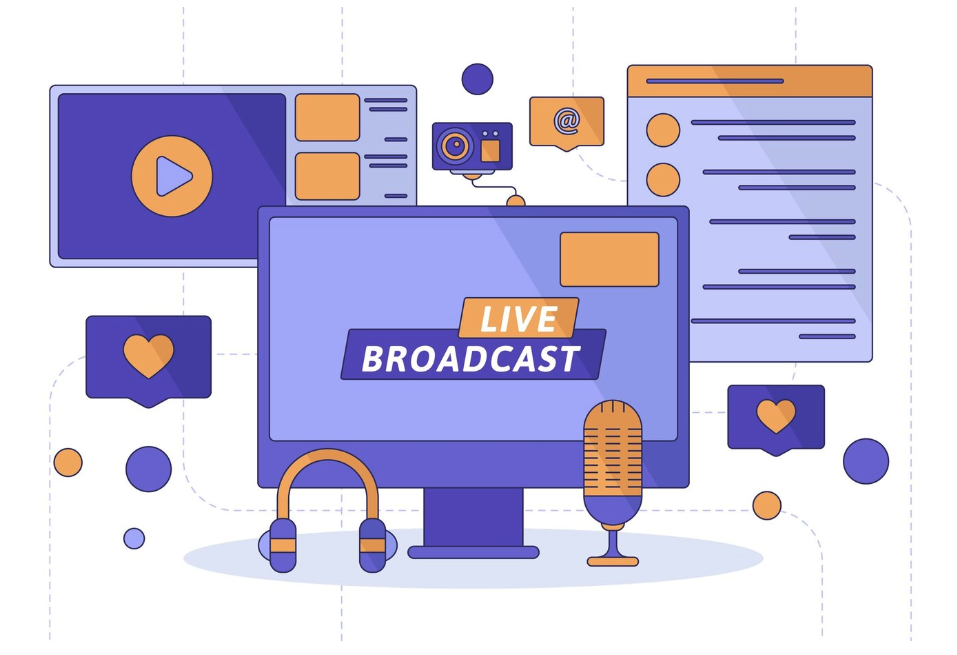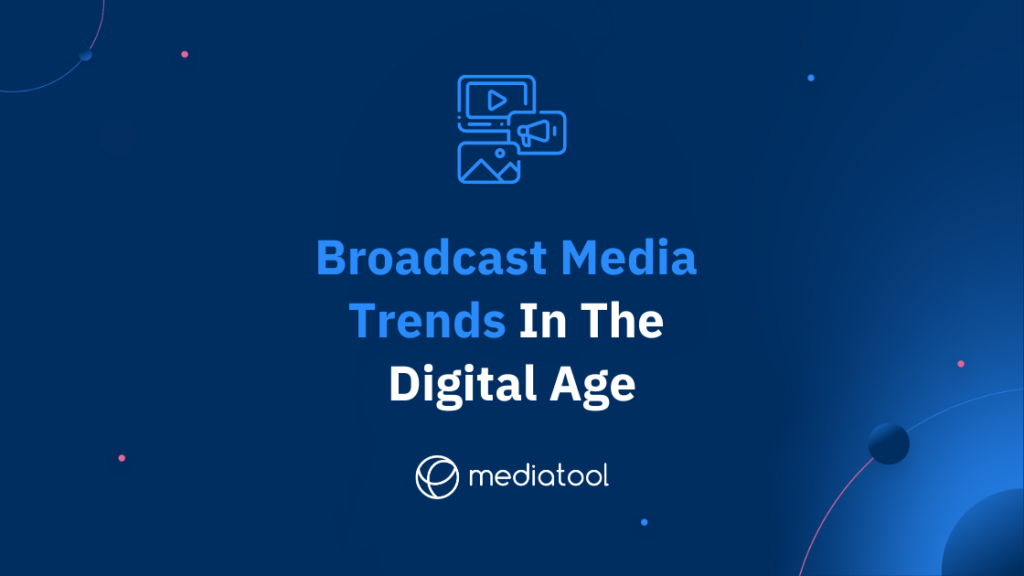What Is Broadcast Media?
Broadcast media is the collective term for a wide range of channels that distribute news, entertainment, advertisements, and more to a large audience. Ever found yourself glued to a TV series marathon or tuning into your favorite radio shows? That’s the magic of broadcast media at work!
Encompassing a variety of platforms, broadcast media includes not only traditional radio and television but also extends to modern online streaming services. This diverse array of media channels delivers a constant stream of content, directly to your screens and speakers.
From the latest television news broadcasts to radio broadcasting, and from dedicated satellite radio programming to television broadcast programming, it’s all about keeping you connected, entertained, and sometimes, offering new insights.
In this dynamic landscape, television and radio remain central, providing a mix of video and audio content to capture the attention of a mass audience. Television advertising and radio ads play a significant role, leveraging these mediums to reach target audiences with precision. Big brands and local businesses alike harness the power of broadcasting media to market their services and products, utilizing air time to convey their message effectively.
Broadcast media isn’t just about entertainment; it’s a cornerstone of mass communications, offering a platform for everything from daily news to special events and in-depth interviews. Social media platforms are increasingly intertwined with traditional broadcast media, creating a more interconnected and expansive media network. In 2023, the global broadcast and media technology market grew to $53.44 billion, showcasing a significant growth rate and the continued expansion of the industry.
Types of Broadcast Media

Okay, so we’ve unpacked what broadcast media is. Now, let’s break it into more digestible chunks – the various types of broadcast media.
Television: The Dominant Force
Now that we’ve got a handle on what broadcast media encompasses, let’s get into its various forms.
At the forefront is television, often regarded as the juggernaut of the broadcast world. Television offers a staggering array of channels, each catering to specific tastes, age groups, and interests.
From gripping world news and engaging television news broadcasts to cozy home cooking shows, adrenaline-pumping sports events, and even those quirky reality shows, TV has something for everyone. It’s a powerhouse of video content, reaching a mass audience and setting trends in both television advertising and popular culture.
Radio: The Timeless Companion
Moving on, radio, the traditional stalwart of broadcast media, continues to play a pivotal role in our lives. As the comforting voice accompanying long commutes and bustling workdays, radio has evolved yet maintained its essence.
Today, it’s not just about traditional radio; we’re talking about a range of radio programs, from talk shows to music marathons. Radio broadcasting, with its dedicated satellite radio programming and local radio stations, continues to be a favorite for audio signals, connecting people through familiar radio ads and beloved radio shows.
The Digital Revolution: Streaming and Online Platforms
But there’s a new chapter in the story of broadcast media – the digital revolution. This era has welcomed a variety of internet-based media channels, notably internet radio and web-based television, marking a significant shift in how content is consumed.
Streaming services such as Netflix, Amazon Prime, and Hulu have revolutionized the landscape, offering on-demand access to a plethora of television and radio programs. These platforms have expanded consumer choice and control, allowing people to tailor their viewing and listening experiences like never before.
Over half (51%) of adults in the US now stream their news content from broadcasters, signaling a change in consumer behavior and the necessity for traditional broadcasting to innovate
The Role of Social Media in Broadcasting
An important addition to this mix is the emergence of social media platforms. While not traditional broadcasters in the strict sense, these platforms have become integral in the dissemination and promotion of broadcast media content. They offer a space for audience interaction, feedback, and even content creation, blurring the lines between traditional and digital media forms.
Broadcast Advertising for Businesses
The Power of Broadcast Marketing
Let’s pivot to a crucial aspect of broadcast media – its role in elevating businesses. How exactly does broadcast advertising help your business stand out? It’s simple: broadcast advertising acts as a dynamic marketing force, capable of propelling your business into the limelight for a wide and varied audience.
It’s an effective way to enhance brand recognition, promote your products or services, and ultimately, boost sales figures.
Revenue for ad-supported video-on-demand (AVOD), OTT, connected TV (CTV), and streaming platforms is expected to grow by 31.6% in 2023.
Diverse Channels for Every Business Need
Consider the diverse range of options within broadcast media: from the traditional to the digital. A catchy tune in a radio ad, a visually striking television commercial, or a well-placed advertisement on a streaming service can all make a significant impact. Each form of broadcast media, whether it’s television and radio or digital platforms, offers unique opportunities to capture the attention of your target audience.
The trick lies in choosing the right channels that align with your business goals and resonate with your audience.
Strategic Placement for Maximum Impact
Remember, not all broadcast channels are created equal. The effectiveness of your campaign depends on strategic placement and timing. A radio advertisement during peak commute times, a television spot during a popular show, or a targeted ad on a streaming service can vary in their impact. It’s about understanding where your audience spends their time and tailoring your approach accordingly.
Trends in Broadcast Media: Is it still worth it?

So, now for the million-dollar question: is broadcast media still worth investing in? It’s time for us to become trend watchers.
Despite the seismic shift from traditional TV viewing towards digital platforms, broadcast television isn’t dead. It’s evolving, changing with the times and trends. And yes, it’s still relevant.
Why, you ask?
Because transformation is the name of the game. In this context, that means transitioning from a TV broadcaster to an all-encompassing broadcaster.
With streaming services claiming a significant chunk of television viewing time, the broadcast industry needs to adapt to stay in the game. By 2024, it’s projected that more than a third of all U.S. households will have cut the cable cord and moved to digital platforms.
However, the good news is that traditional broadcast media isn’t obsolete. There are still audiences who rely on and prefer these channels. The trick is to adapt, to offer content that can be accessed from anywhere, at any time, on any device.
The Broadcast Media Opportunity
So, what does the future look like for broadcast media? One word: Opportunity! With the expansion of OTT (Over The Top) delivery systems, such as Apple TV and Roku, traditional TV stations can reach audiences in new ways and at new levels. While delivering news or weather forecasts on these platforms, the stations can offer additional content that wouldn’t fit a typical news broadcast, like detailed explainers or live coverage.
Providing accurate, localized, and up-to-the-minute updates is becoming increasingly crucial in information overload. Users now crave timely and personalized content, and any broadcaster that can cater to this demand is likely to find success.
Incorporating digital platforms is reshaping workflows, leading to a transition from a broadcast-centric model to a digital-first model. The broadcast media industry is entering an era where the focus will shift from treating digital as a complementary service to considering broadcast as a supplement to digital.
Additionally, the rise in local programming on broadcast TV is another trend to watch. Stations are replacing syndicated shows with local news or infotainment shows to cater to the audience’s demand for more localized and relevant content.
While the shift to digital continues to gain momentum, the importance of quality content is increasingly recognized. As the competition intensifies, local broadcasters have a unique advantage: their in-depth regional knowledge and expertise. By pairing this with trusted, recognized on-air talent, broadcasters can create compelling news stories that stand out from the crowd.
However, merely reposting TV broadcasts on digital platforms is not enough. The content must be specifically formatted for digital platforms and should leverage unique features available on these platforms. For instance, broadcasters can start with a quick forecast overview for viewers looking for instant updates, then proceed to more detailed content, such as the science behind the weather.
While the transition may seem daunting, this evolution in broadcast media presents many opportunities. By embracing change and leveraging innovative technologies, broadcasters can create engaging content that resonates with today’s digitally savvy audience and drives their success in the future.
Looking to add broadcast to your media plans? Great! When it comes to managing global campaigns, using a media planning tool can make a ton of difference. Here’s a guide that will help you to carve out what to look for in the ultimate tool.





